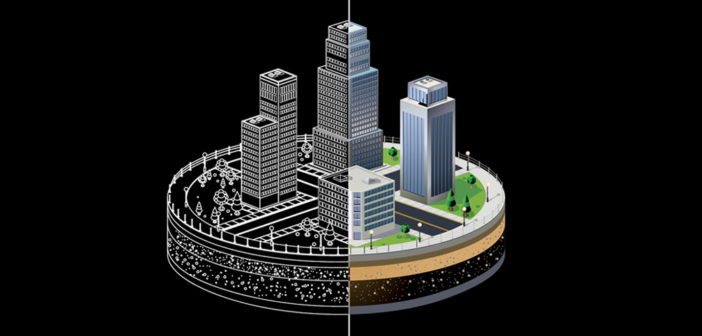Until recently, the concept of the ‘Digital Twin‘, where digitised versions of physical assets are updated in real-time with real world sensors, was thought of as science fiction. Today, we are starting to see the concept being adopted in successful building-wide installations across the globe.
I myself took the first step into digitising my home with the purchase of a SMART thermostat that allows me to control the heating of my house remotely via a mobile phone app. Now that these and other SMART consumer devices such as lighting and security systems are growing in popularity are we likely to see an increase in demand in our work-life?
The Digital Twin mentality in my view can be applied to Building Information Modelling (BIM), and the design and construction processes that create these new SMART assets. Having up-to-date real-world data that is accessible by the project team avoids basing decisions on bad foundations and saves money through avoiding mistakes. The more we ground digital data in the real world the more we improve the construction process.
Why should planning, design or construction not be based on up-to-date, real-world information?
Historically, the industry has relied on 2D data-sets to create the designs and plans that are used during construction. 2D data-sets alone, particularly the ones that are not up-to-date, provide a huge risk to companies meaning critical decisions are based on inaccurate information. Even during construction, capturing real-world information regularly can help avoid those costly mistakes that occur when assuming the ‘Digital Twin‘ is accurate.
The construction industry over the last decade has slowly begun to embrace new techniques and technology that help provide rapid, real-world data capture. Laser scanning and the recent growth in popularity of UAVs, and the imagery information they provide are two examples. The biggest barrier for people is handling this large stream of data and integrating the data into their existing workflows.

The data (scan or image) is notoriously large and is unlikely to get any smaller; if anything, data size is likely to grow. The key to overcoming this barrier is to avoid copying and replicating the data in multiple locations and transferring it between systems. Solutions like Leica JetStream allow gigabytes of point cloud data to be stored in a centralised location, streaming large data-sets directly into your CAD or BIM software, enabling you to complete the job much faster.
Embracing these types of technology successfully relies on the people and processes involved. Understanding how to integrate this real-world data into your BIM projects involves an investment in both time and people.
The concept of Digital Twins, BIM and the global digital revolution will drive the appetite for improvement in our industry and the world we live…
To find out more about BIM and how to ‘Unlock its value‘, download the whitepaper by clicking here.
This post was featured initially on Mark King’s Linkedin. Vist Mark King’s LinkedIn page to keep up to date with latest blogs and BIM news.

Mark King, BIM solutions manager at Leica Geosystems















